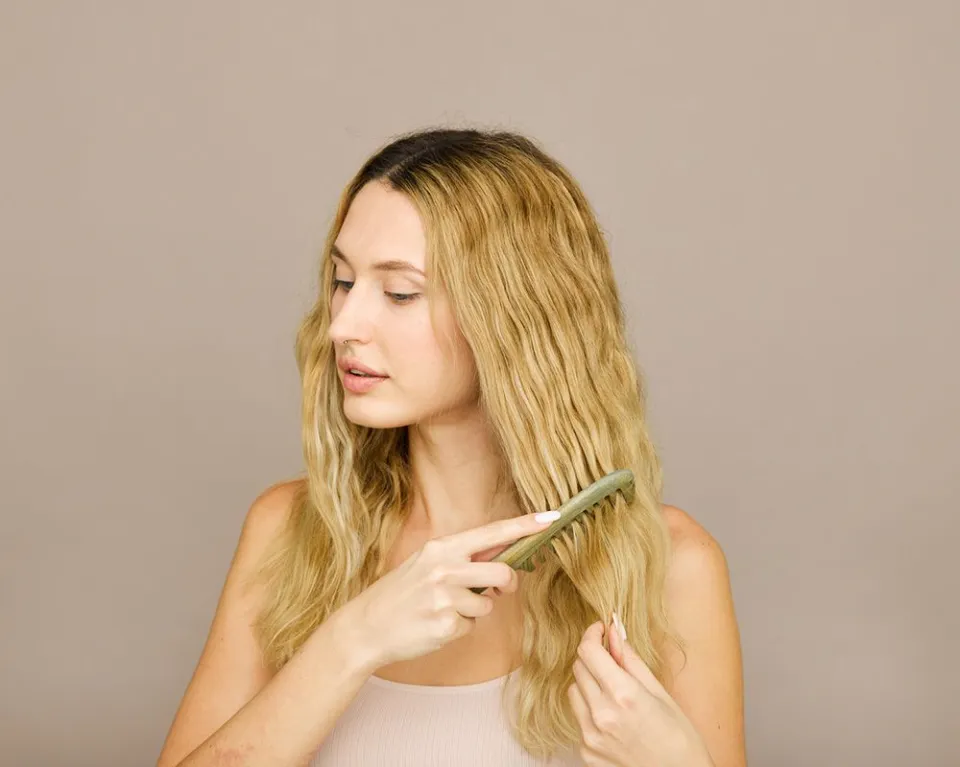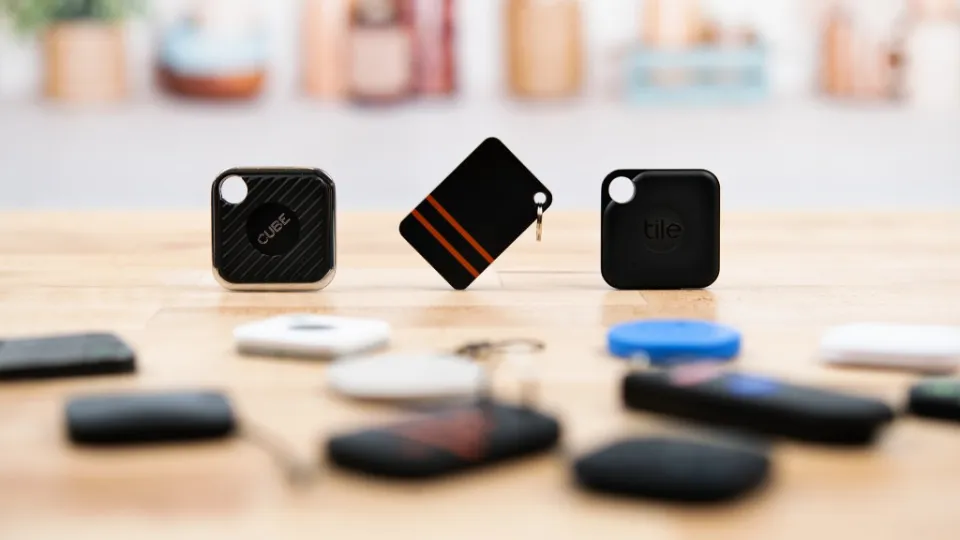When used improperly, hair developer can harm your hair, though developer itself is not harmful to your hair. When combined with bleach or dye, it may suffer harm.
It’s crucial to educate yourself on the specifics of developer because selecting the incorrect one could result in a color formula with unpredictable results or damage your client’s hair.
Let’s not waste time, and dive right into it.
What Does a Developer Do?
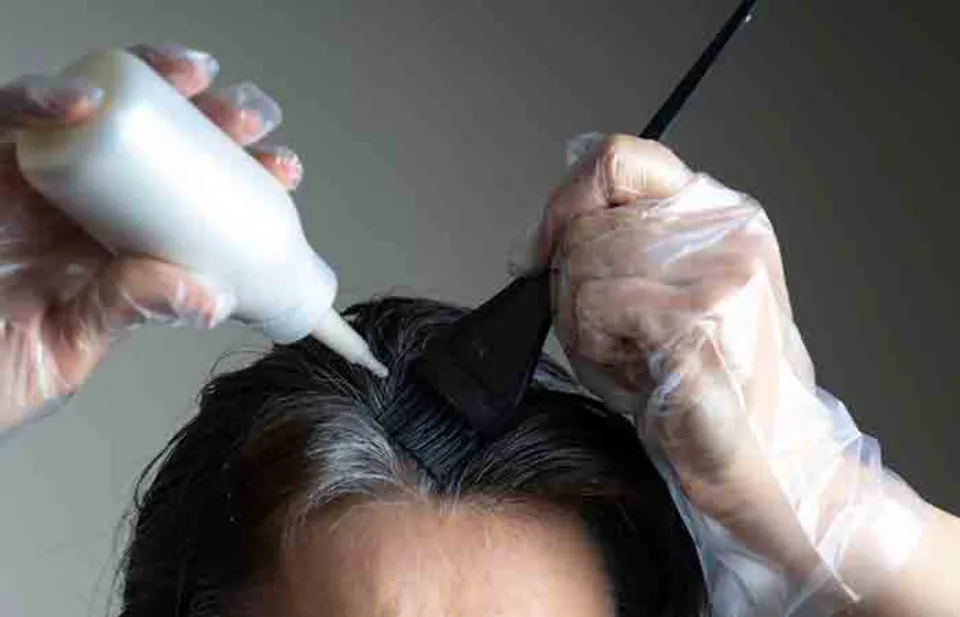
Reviewing oxidative color first They begin as tiny, colorless precursors that must be combined with a developer, and only after a chemical reaction results from the mixing do they take on their final color. The chemical reaction continues when it is applied to hair, breaking down and creating new hair bonds. This is what changes the natural color of hair to artificial. Simply, developer is a big deal.
If we’re being totally honest, it’s the star of the show. Developer has three main jobs. First, it lifts the cuticle later, which allows dye molecules to penetrate the hair shaft. Then, by dissolving the chemical bonds in the hair, it makes the removal of melanin easier. Last but not least, it responds to the ammonia found in synthetic hair dye, which helps the oxidation process. Easy enough, right?
As we know, there’s a wide variety of types of developers. It’s significant to recognize the variations in developers’ skill levels. The formula might not work out as intended if you pick the wrong developer for your client.
How Does Developer Damage Hair
There are various hydrogen peroxide concentrations available for the developer. And, as with many things, too much can be damaging. However, there are very slim chances that using the developer while considering how strong your hair is will harm it.
Any amount of developer you mix with the bleaching powder will result in some dryness, though this is normal.
The following situations are those where it is most likely that the developer will harm your hair by dehydrating and robbing your hair strands of protein.
Using High Volume Developer on Weak Or Chemically Treated Hair
For the most part, a developer containing 9% or 12% hydrogen peroxide is harsher on the hair strands. Your hair will become weaker and more vulnerable to damage as a result of the reaction it has with the keratin or other proteins in the hair shaft.
Based on the amount of hydrogen peroxide they contain, various volume developers are offered in different categories. The amount of hydrogen peroxide will increase as the volume increases.
You cannot simply choose any volume developer and combine it with bleaching powder to lighten your hair. First, you will need to decide how many levels of hair color you want to change.
Once you decide on how many levels you want to lift your hair shade, you will select the developer accordingly. You would need a volume 40 developer for a three- or four-level color lift.
You should always consider the health of your hair before bleaching it, and one way to do this is to measure its porosity. Any developer with a volume of more than 20 should not be used if you have weak or hair with a high porosity.
Employing Developer Without Bleaching Powder to Lift Hair Color
In order to oxidize the original hair color to a lighter shade, developer is the only ingredient used in bleach. Ammonia, which opens the hair cuticle and enables the developer to access the middle layer of hair, which contains the color pigments, is the only additional component required to complete this task.
Many people have the misconception that using developer instead of bleach powder will lighten their hair. But the truth is quite the opposite. When you change the color of your hair without using bleach, your hair may sustain significant damage.
Because very little hydrogen peroxide will be able to penetrate the hair cortex and most of what does will adhere to the cuticle of the outermost protective layer, this is the reason.
Your hair strands will become gummy, dry, and weak if you use a developer without bleach because it will melt away significant proteins from them. Additionally, you won’t experience any color lift.
Leaving Developer With Or Without Bleach for Too Long on Hair
It is impossible to completely prevent the dryness and brittleness that a developer cause to your hair, despite the fact that some people use a leave-in conditioner before bleaching and others try to apply coconut oil to their hair. However, you can significantly lessen the potential harm.
More harm will be done if the developer or bleach powder are left on your hair for an extended period of time. Because of protein and moisture loss, your strands become weaker the longer it stays.
According to Healthline, the developer also causes oxidative damage to your hair, and you might experience some degree of hair loss.
Instead of waiting for developer and bleach powder to lift your hair color for 20 or 30 minutes straight, you typically have to check your hair every five minutes. Your chances of success are worse the earlier they tint your hair.
People choose a bleach bath instead of using a developer to color their hair because it lifts the color faster and results in less dryness and breakage. Some people even consider bleaching their hair without a developer and instead use conditioner, which is a ridiculous idea.
Using Developer Too Often on Your Hair
As previously stated, nearly all of the harm that bleaching your hair does to it is caused by the developer, also known as hydrogen peroxide. Your hair will feel lifeless and frizzy because it shatters the proteins that keep your hair strands together.
Consequently, you should anticipate noticeable dryness, split ends, roughness, and breakage to your manes if you use the developer too frequently, by which I mean more than once a month. When you attempt to lift your hair color occasionally, it will undoubtedly harm your hair.
Typically, experts advise against bleaching your hair more frequently than once every four to six weeks. Applying some of the best oils to your chemically treated hair will give them time to recover, but if you want to lift your mane again sooner, make sure you do so.
Which Volume Developer to Use to Avoid Hair Damage?
Particularly if you know how many levels you want to lift your hair, not every volume developer is designed for your hair. The volume 20 developer, according to hair expert Catherine Neat, is her go-to choice for minimal color lifting.
The following explains how various volume developers can damage your hair in varying degrees. Also, which one you should choose while looking at the condition of your hair and the final color you want after bleaching.
Does Volume 20 Developer Damage Hair?
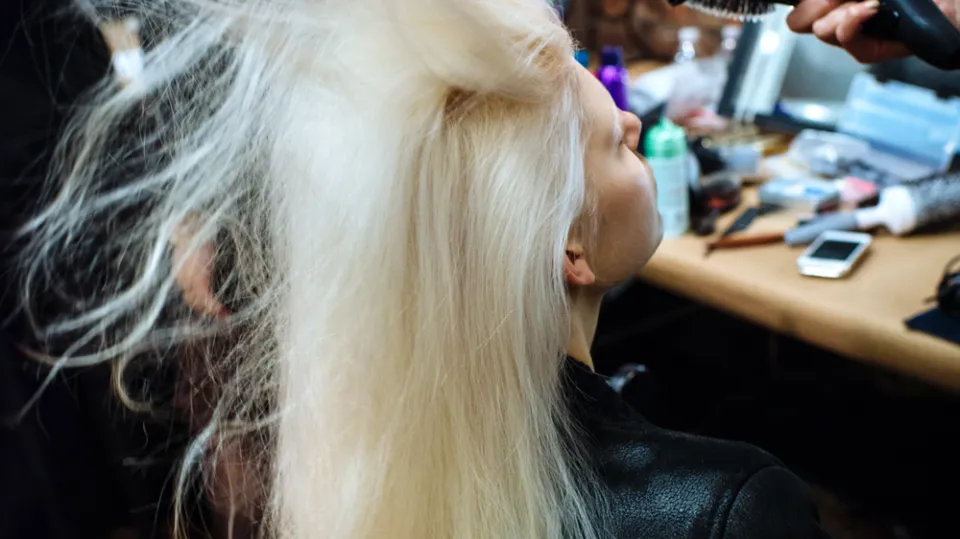
A volume 20 developer is less likely to seriously harm your hair, though it is not completely safe, especially if you have delicate hair. This is because hydrogen peroxide only makes up 6% of the mixture, and that is the only explanation. The loss of proteins and moisture decreases with the developer’s strength.
To prevent hair damage, who should prefer using the volume 20 developer? It will be beneficial to keep in mind the next three things.
1. Degree of Hair Lightening
A volume 20 developer is best for someone who wants to lift their hair color by 1-2 levels. To turn brown hair into light brown or dark blonde, for instance, mix this developer with bleach powder.
2. Hair Texture
You can get a color lift of up to two levels with Volume 20 and it works well with delicate and normal hair types. For fine hair, you can even use slightly less developer than what is recommended on the kit, but you must follow the directions for normal hair.
3. Hair Condition
If you have high porosity hair, you need to go with a volume 20 developer to avoid hair damage. You won’t be able to increase hair color beyond two levels, though.
Can Volume 30 Developer Cause Hair Damage?
The color lift ranges from two to three levels with a volume 20 developer, which is harsher than 30. If you don’t want your hair to look straw-like, look into the following things before going with 9% hydrogen peroxide in your hair bleach mixture.
1. Degree of Hair Lightening
You must use volume 30 developer if you want to lighten your hair two or three levels.
2. Hair Texture
9% hydrogen peroxide or volume 30 developer is best for normal and thick hair texture. However, if you want it to use on your fine hair, you might experience some degree of hair damage.
3. Hair Condition
The use of volume 30 developer or higher is not advised on extremely porous hair strands, according to experts.
When You Shouldn’t Use Volume 40 Developer to Avoid Hair Damage?
The harshest and most harmful developer for your hair is one with a volume of 40 or higher. However, it is the only option to lift your hair color up to eight levels. As a result, before bleaching it with a volume 40 developer, ensure that your hair is in the best possible condition and thickness.
Otherwise, you will most likely suffer extreme dryness and breakage that will be difficult to reverse in a short time.
Can You Use Hair Dye Without a Developer?
Without a developer, using hair dye would be useless. If you use a hair dye that’s designed to be used with a hair developer would be a waste of your time and money because neither hair product will work without activation caused by combining the two.
They operate simultaneously, with the developer opening the hair cuticle and the dye depositing color molecules in the hair shaft, as was previously mentioned. As a means of self-activation, they both rely on one another.
A splotchy appearance where the dye simply washes off after a few washes will result from using the hair dye without a developer. Simply put, this indicates that the outcome will be a major mess.
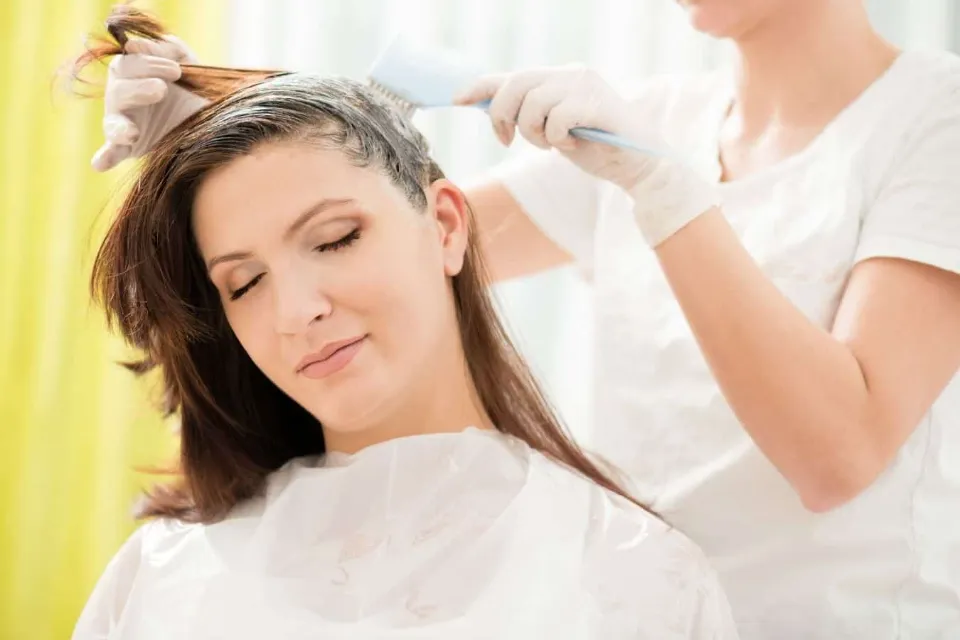
Wrapping Up
Volumes 10 and 20 are less likely to harm your hair noticeably, even though no developer is completely safe for it. As a result, they are the best choice for someone with thin, weak hair who wants to lighten their color by 1-2 shades.
On average or thick and strong hair, volume 30, 40, or higher can be used safely, but not too frequently. Because strong hair can withstand damage, this is the case. To prevent hair damage, only ever purchase developer from reputable brands.
FAQs
Does Developer Make Your Hair Fall Out?
When bleach and developer are used in the incorrect quantities or are left in the hair for an excessive amount of time, the result can be extremely fragile, stringy hair that can even cause burns on the scalp. In the worst-case scenario, a person can experience losing chunks of hair.
Is Developer Less Damaging Than Bleach?
Even though developer-only lightening is less damaging than using bleach, it can still cause damage to your hair. If you want to protect your hair, choose a lower volume developer because higher concentrations of developer harm hair more than lower ones do.
Does 10 Developer Damage Your Hair?
Use 10 Volume if you are applying permanent, no-lift hair color. This is precisely what you should mix with if the desired outcome is to maintain color at the same color level by merely adding a tone or a tint. It is the least damaging to the hair and won’t significantly lift your base color.
Can Too Much Developer Damage Your Hair?
40 When dealing with truly stubborn hair situations, Volume Developer, which contains 12% hydrogen peroxide, should only be used on the lengths of the hair and never on the scalp. It has extremely strong lifting power, but because it opens up the hair cuticle so much, it can damage the hair cuticle unnecessarily.

